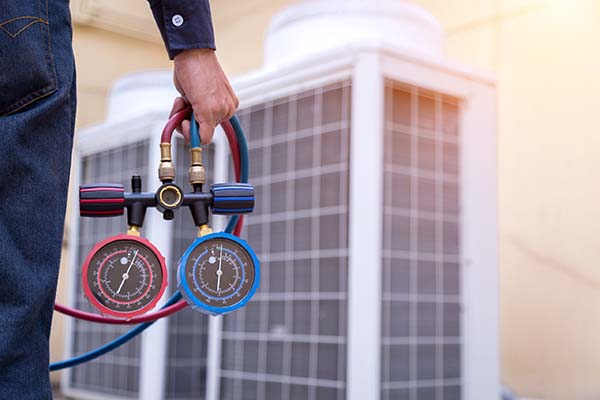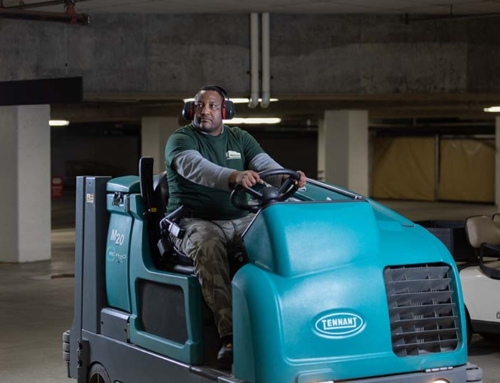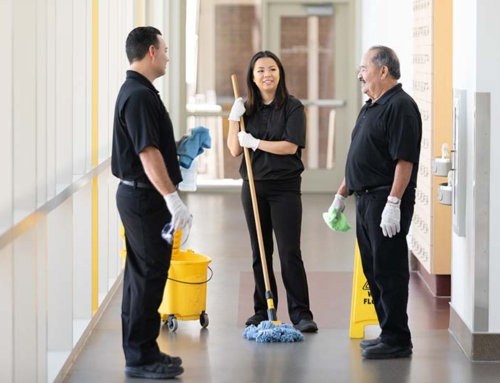 There’s been a lot of discussion in facility services leadership circles about the importance of indoor air quality. The pandemic elevated awareness of the transmission of airborne contagions. Thus, putting a heightened focus on indoor air quality in facility services and its role in creating a safe and healthy environment.
There’s been a lot of discussion in facility services leadership circles about the importance of indoor air quality. The pandemic elevated awareness of the transmission of airborne contagions. Thus, putting a heightened focus on indoor air quality in facility services and its role in creating a safe and healthy environment.
Indoor air has more contaminants and pollutants than what we breathe outdoors, and the EPA estimates indoor air can be 2X – 5X more polluted. Studies also show that the concentration of particulate matter in indoor air correlates negatively with worker productivity and increased risk of illness. So, let’s look at five critical actions facility managers should take to ensure they are monitoring and addressing indoor air quality concerns.
Commercial HVAC System Preventative Maintenance Programs:
Keeping your commercial HVAC system running at peak performance is essential to regulating temperature and indoor air quality. Implementing proper preventative maintenance techniques can improve your facility’s indoor air quality and substantially reduce the total cost of operation. The commercial HVAC system, operation, and maintenance are significant factors in your overall facility operating budget. So you should prioritize establishing a schedule and process for preventative maintenance and potentially even leverage predictive analytics. The right preventative maintenance strategy will identify target areas where proactive measures can produce the most dramatic impact. Maintenance needs to be performed by certified and highly qualified professionals. Finding qualified technicians can be challenging, and you might want to consider contracting with a professional mechanical and commercial HVAC services provider.
Implement a Responsive Air Monitoring and Air Purification System:
While maintaining your commercial HVAC system is a critical step in indoor air quality, leading facility managers are seeking more advanced approaches to create safer and healthier environments for their employees, tenants, and guests. Newer technologies allow facility managers to proactively monitor and address indoor air quality issues when they arise. Sensor-driven, responsive air, and surface purification technologies can be added to your existing commercial HVAC system. Solutions like the Marsden CleanAir System from Marsden Services will proactively monitor and purify your facility’s air. These systems address indoor air quality issues in real time. Using patented technology, the CleanAir System senses when particulate levels reach an unacceptable level. Sensors then activate a generator that can be installed in your existing air duct system. The generator uses a similar process found in nature, introducing an overabundance of positive and negatively charged ions into the commercial HVAC system’s airflow. The procedure diminishes particulates and harmful pollutants and even reduces odors. Marsden’s CleanAir System is the only approach combining both 24/7 monitoring and automation technologies to dramatically improve the filtration system’s effectiveness and indoor air quality. Independent laboratory testing proves the technology neutralizes up to 99% of tested allergens, bacteria, and viruses from indoor air and surfaces.
Indoor Air Quality Requires Both an Inside-Out and Outside-in Approach
The outside air drawn in and delivered through your commercial HVAC system is essential in diluting inside pollutants. Inside air quality is impacted by particulates and pollutants released from building materials, daily operations, and potentially even the chemicals and commercial cleaning materials used by your janitorial services team. Acknowledging the outdoor air’s role, bringing air from the outside means you must also monitor and be mindful of your local air quality issues. Awareness of outdoor air quality concerns will allow you to plan and implement proper filtration methods in your commercial HVAC system to ensure you remove pollutants like carbon monoxide, pollen, and chemicals, etc. Thinking from the inside out and outside in will help you distribute properly ventilated air and provide cleaner, safer, healthier workspaces for your employees, tenants, and guests.
Monitor Blocking of Air Vents, Grills, and Thermostats to Improve Indoor Air Quality
One low-cost and straightforward way to prevent indoor air quality and climate issues is to develop and implement policies to routinely inspect all air vents, grills, and thermostats. Preventing furniture or other equipment from impacting airflow and temperature. Furniture, file cabinets, and even space dividers can block the return and proper airflow needed for good indoor air quality. Identify all equipment that generates heat, space heaters, appliances, servers, or computer equipment, they should never be too close to a thermostat. The heat the equipment generates will prevent your system from adequately controlling temperatures. You’ll be surprised by the benefits you realize simply by managing the placement of equipment and furniture to ensure your system operates properly. When airflow is blocked, your commercial HVAC system may require additional run time to sufficiently heat or cool your building, thus negatively impacting your facility’s operating costs.
Evaluate and Implement High-Quality Janitorial Services Protocols:
Your janitorial services protocols will also play a significant role in maintaining the indoor air quality of your facility. People, processes, and products are all key elements you should evaluate. You’ll want to ensure your team uses commercial cleaning products approved by the EPA and designed for the intended job. Every product impacts indoor air quality, from the chemicals your janitorial services team uses to the paper product and microfiber flat mops or dusting clothes. Using entryway floor mats that allow people to take 10 -12 steps upon entry to your facility can positively impact indoor air quality. A well-managed floor mat program can prevent up to 85% of dirt and debris from being tracked throughout your facility. During the winter, these mats can also help protect your floors by reducing salt and other chemicals used to minimize slips and falls from icy walkways.
Proper training and support for your janitorial services staff is the key to success to ensure you realize all the indoor air quality benefits you seek from the protocols. Your janitorial services crew is on the front lines and often overlooked. Their knowledge and attention to detail are essential in managing the indoor air quality in your facility and ultimately keeping your tenants, employees, and guests safe.
Be Proactive, To Improve Facility Efficiency and Indoor Air Quality
Facility managers are feeling pressure as they take on elevated roles in providing safe and healthy environments for their employees, tenants, and guests. The pandemic raised awareness about the importance of indoor air quality and proper cleaning and disinfection programs. Following the five steps identified in this post will help address your facility’s indoor air quality needs. The best solutions will come from an integrated facility services approach, including proper preventative maintenance of critical building systems like your commercial HVAC system, the use of modern responsive air monitoring and purification solutions, and the people, processes, and products involved in all daily tasks essential to keeping your facility operating efficiently. Managing all aspects of your indoor air quality requires a depth of knowledge and skill that can be hard to hire. Integrated facility service providers like Marden Services know of the latest technologies and have experience implementing solutions to impact indoor air quality positively.
Want to learn more? Read what we’re reading:
- Matting: Leaving Dirt At The Door
- Everything You Need to Know About Best Microfibers by CleansGreen
- Palen Kimball: Preventative Maintenance Services
- CleanAir Powered by PuriFi: Air Purification for a Cleaner, Safer, and Healthier Environment
- Key Guidelines: How to Improve Indoor Air Quality in Your Workplace
- What Building Facility Managers Can Do to Promote Good Indoor Air Quality
- Indoor Air Quality Can Impact Your Productivity
- Cleaner Air is Good for Business: PuriFi has Custom Solutions for Commercial Applications
- Indoor Air Quality: What are the Trends in Indoor Air Quality and Their Effects on Human Health?
- The Health Impacts of Indoor Air Quality
- Infection Control Technologies for Building Design
- UL Listing Report: Follow-Up Service Procedure, Accessories, Air-Duct Mounted
- Bipolar Ionization: Understanding the Difference Between Theory and Practice
- ASHRAE Epidemic Task Force: Filtration and Disinfection
- Review the latest reports of scientific tests performed with PuriFi products
- Used in Large-Scale Ventilation Systems Worldwide, Bipolar Ionization Could be a Secret Weapon in the War Against COVID-19



